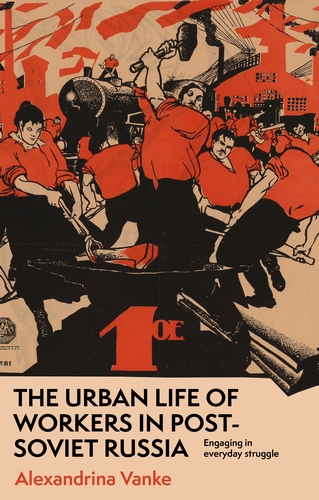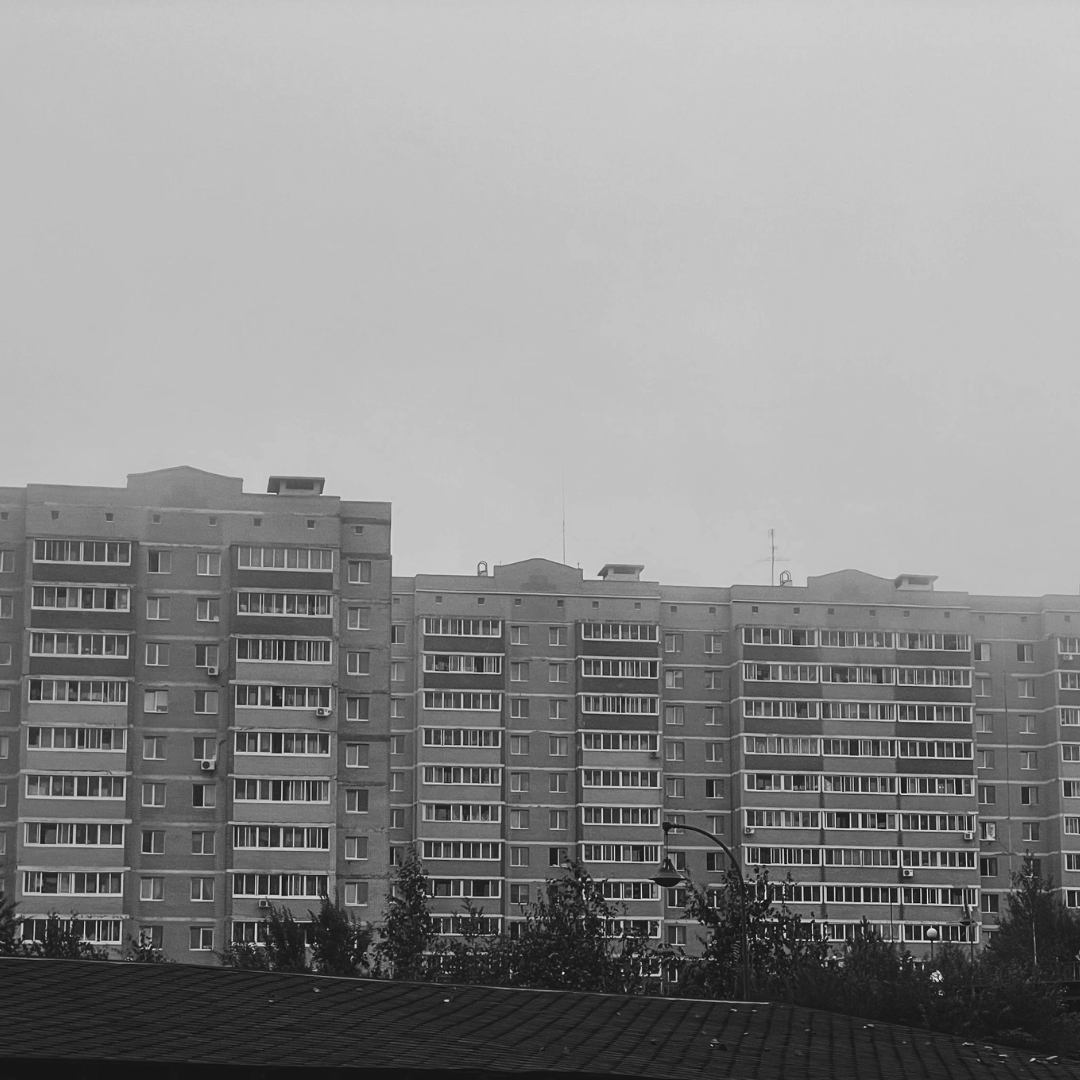Challenging stereotypes of post-Soviet Russian workers

Published by: Manchester University Press

Growing up in a working-class family in a provincial town of European Russia, I had the bitter privilege of witnessing life in the remnants of the Soviet Union. Born too late to be part of the last Soviet generation, I was just in time to become a kid of Putin’s first generation, spending only two years of my life not under his presidency. As a child I was constantly confronted with objects and signs, hatred or nostalgia for the Soviet past – it seemed that its remnants would never be fully dismantled. My family’s lifestyle also indicated both a rejection and acceptance of their belonging to the working class, at least the way they understood it. I began to wonder what exactly is the working-class lifestyle in contemporary Russia? Do working-class people experience the same struggles as my family? And who really belongs to the working class now? Then I encountered Alexandrina Vanke’s book.
In her 2024 book The Urban Life of Workers in Post-Soviet Russia Engaging in Everyday Struggle, Vanke, who holds a PhD in Sociology from the University of Manchester, aptly observes that the working class is stigmatised and misrepresented in both research and the media. That is why one of her objectives is to urge the reader to have a sense of post-industrial spaces as well as “power imbalances and inequalities reproduced within and by the dominant mainstream discourses about the working classes and the poor” (p. 204). One can perceive that the book is in a way an activist’s statement, which was accentuated after Russia’s 2022 full-scale invasion of Ukraine. Essentially, if you are expecting a structural history of the working class in the post-Soviet area, covering issues such as policies and discourses, it is better to turn to other works, including some of Vanke’s own earlier articles.
My family’s lifestyle also indicated both a rejection and acceptance of their belonging to the working class, at least the way they understood it.
The performative genre of the book and its profound ethnography spanning twelve years indirectly puts forward the principle of mimesis – representation through the direct quotes, stories and practices of working-class people – rather than relying on secondary sources and positioning objectivity through dry facts. Vanke sets the goal of giving a much-needed voice to people who belong to the urban working-classes in two locations: anonymous (post-)industrial neighbourhoods on the fringes of Moscow and Yekaterinburg. The research is based on multi-sensory data, meaning the usage of multiple data collection techniques in the field: interviews, participation, observation, and art-based methods (p. 15).
The first part of the book establishes the author’s theoretical and methodological framework, situating her research within the existing literature. Alexandrina Vanke engages with debates on workers’ agency and their role in driving social change, seeking to fill a gap in the literature on the region by focusing on “the socio-material infrastructures and environments of industrial neighborhoods in large Russian cities” (p. 6). Central to her analysis is the introduction of a dozen concepts that become pivotal in later interpretations. For instance, she conceptualises everyday struggle as “multiple and grassroots” (p. 47) and describe structure of feeling as “an affective principle regulating senses, imaginaries and practical activities in socio-material infrastructures” (p. 50). Through these and other concepts, complemented by two sketches, Vanke constructs an abstract framework that weaves together the “novel theory of the everyday” (p. 52).
The second part of the book adopts an abductive logic, moving between theory and field observations in a dynamic, iterative process. Utilizing the concept of structure of feeling, Chapter 2 reveals that the residents of Moscow neighborhoods tend to look toward the future, while those in Yekaterinburg reimagine spaces and time through the lens of the Soviet past (p. 78). In Chapter 3, Vanke applies the concept of a spatially gendered habitus to expand on Bourdieu’s theory of habitus. However, while her findings are empirically rich, her contribution to the theoretical framework feels limited; Bourdieu himself examined the intersections of social and sexual divisions of labour as well as the relation of the (real or imagined) body to them in The Logic of Practice (1992). This section’s strength lies in its detailed observations rather than its conceptual innovation.
In post-Soviet Russia, some household items and material objects designated classed signifiers (p. 96), the belonging to a particular and perceived class which middle-class people wanted to emphasise and present especially to guests.
Chapter 4 examines the intersection of class, ethnicity and gender, as well as the self-valuation of one’s class through the concept of morally loaded signifiers. Since the author visited some of the respondents’ flats for interviews, one important thing that could have been mentioned are class-defining elements of decor in domestic spaces. In post-Soviet Russia, some household items and material objects designated classed signifiers (p. 96), the belonging to a particular and perceived class which middle-class people wanted to emphasise and present especially to guests. The next Chapter 5 goes one abstract level further and focuses on working- and middle-class people’s perceptions of larger social structures through social images of stratification based on respondents’ drawings. This art technique highlights how individuals humorously reject or reflexively comply with their assigned social classes and even challenge the whole class system.
The third part shifts focus to the political and practical consciousness of the working classes and their modes of mobilization. Chapter 6 is built around the author’s observation of spontaneous riots, protests and interviews with three people who are members of different trade unions. We get an on-the-ground perspective of overt forms of mobilizations in a group of people usually considered passive. The chapter could have benefited from considering how state and media propaganda, in particular its portrayal of migrants as a threat, influences the (lack of) mobilization or fuels tensions.Further, Vanke explores dispositions of protest, or what she calls a habitus of protest (p. 170). Yet, the sporadic nature of participation led me to question whether this could really be considered a separate habitus.
Vanke addresses my skepticism in the following Chapter 7, incorporating the concept of micro-practices as foundational to everyday struggles and as tools for reinforcing class identity. Her observations on housing and communal art as forms of both material resistance and popular culture are compelling, but the absence of such efforts could also constitute resistance. A complementary analysis of graffiti and street art could have shown the “negative resistance”, in contrast to Vanke’s “positive ties” formed through residents’ beautification projects in social housing blocks.
One of the book’s more personal touches is Vanke’s inclusion of her own voice, such as her exclamation of enthusiasm about the delicious pancakes made for her by an interviewee. These moments add warmth and intimacy to her narrative but also raise questions about the balance between immersive ethnography and critical distance.
Some of Vanke’s interpretations verge on overreach. For example, her anecdote about a Moscow hairdresser requesting cash payment to avoid taxes, which she interprets as a form of peaceful resistance to war (p. 195), may come across as speculative. Similarly, while she frequently mentions deindustrialization, her analysis primarily addresses its effects rather than tracing the process itself in workers’ narratives. This omission leaves workers’ subjectivities appearing somewhat static, which may reflect the limitations of the theoretical framework she employs. Critics of habitus (whom Vanke acknowledges) have long noted its resistance to capturing processes of change, and this critique applies here as well.
One of the book’s more personal touches is Vanke’s inclusion of her own voice, such as her exclamation of enthusiasm about the delicious pancakes made for her by an interviewee (p. 89). These moments add warmth and intimacy to her narrative but also raise questions about the balance between immersive ethnography and critical distance. While her reflections enhance the reader’s engagement, they also invite scrutiny regarding how scholars can remain critically attuned to perspectives beyond their own gaze.
In sum, Vanke’s book is an example of immersive, prolonged ethnography enriched by creative methodologies and a deep engagement with the lived experiences of Russia’s urban working class. However, its theoretical contributions occasionally falter, and certain interpretations risk overextending the evidence. Nonetheless, it offers a textured and evocative account of a class often misrepresented or ignored in mainstream discourse, providing valuable insights into the complexities of post-Soviet social life.
Viktoria Kobzeva is a PhD student at the University of Birmingham, where she is conducting her research on the dynamics of civil society in post-Soviet countries, examining the emotional regimes and practices of civil society actors. She previously completed her postgraduate studies in the Nationalism Studies programme at Central European University. Viktoria’s research interests include civil society organisations, sociology of emotions and migration policy. She has gained practical experience through internships at such organisations as International Centre for Migration Policy Development and the Institute of Statelessness.
